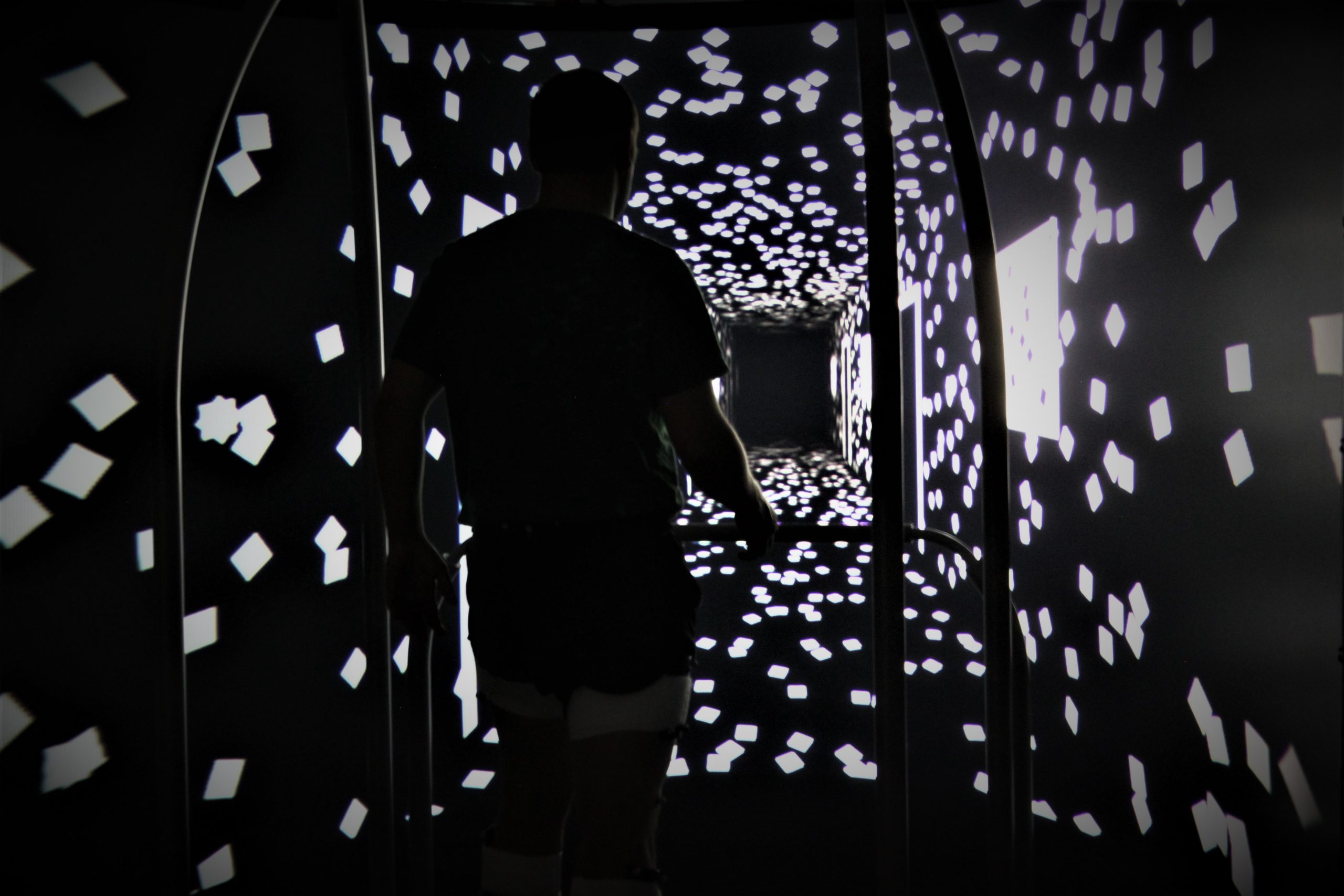BME Assistant Professor Jason Franz, together with Dr. Brian Selgrade and Diane Meyer of UNC, and Dr. Jacob Sosnoff of the University of Illinois at Urbana-Champaign have used virtual reality experiments to show how a potentially portable and inexpensive test could reduce falls and related injuries in people with multiple sclerosis. Their research was just published in PLoS One: “Our promising results suggest that one can use VR to detect balance problems that usually go undetected until the individual starts experiencing real falls at home or work,” said Dr. Jason Franz, principal investigator of this study.
MS is a brain disease that affects about 400,000 people in the United States and more than 2 million worldwide. It is thought to be caused by inappropriate immune cell activity in the brain. Signs and symptoms of MS include fatigue, numbness and tingling, cognitive impairments, mood instability, and balance and gait problems. Dr Franz and colleagues have employed a VR device that is like a semi-circular theatre screen that subjects watch while walking on a treadmill. The VR scene depicts a hallway down which the subject seems to be walking, at the same speed that the subject walks on the treadmill. Sometimes side-to-side wobbles in the scene create the illusion that he or she is becoming unstable, triggering a corrective reaction that can be measured as a change in gait and foot placement. 14 people with MS and 14 age-matched non-MS participants were tested, and there was a clear difference between the groups in their reactions, but this only became clear when using the VR balance challenge.
Dr Franz and his colleagues are now adapting this system with consumer-grade VR headsets as a routine diagnostic tool to be used in neurology clinics to alert MS patients earlier to their balance impairments, allowing them to adopt measures to reduce their risk of falling. They also hope to develop the VR system as a tool of physical therapy to help MS patients improve their balance and thus reduce the risk of falls. To read the full paper, visit PLoS One here, or the official news here.



